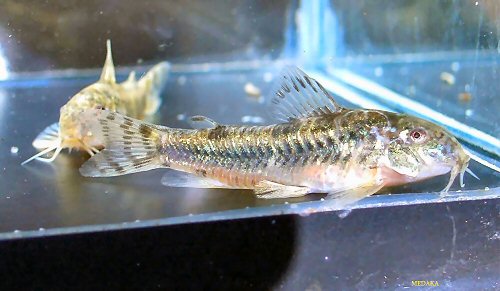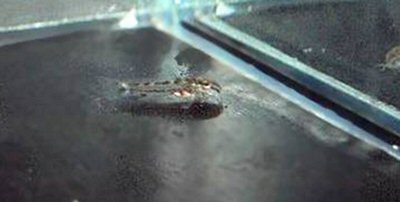SCOTCAT.COM
your internet guide to all things catfish
| Breeding Aspidoras sp. C125 |
| by Adrian Taylor |
Aspidoras raimundi - (C125)
The fish were quarantined for ten days and as they showed no signs of disease were moved into a tank that contained a couple of pairs of Skiffia Multipunctata livebearers. The tank measured 50cm x 29cm x 19cm and had a sand substrate and filtered by a air powered small corner box filter, the air flow was on what I would describe as being neither too slow or too fast. I fed them one day on newly hatched brine shrimp and flake, and the next day on newly hatched brine shrimp and grindall worm and so on. On average I did 15% water changes probably six out of seven days. Into one corner of the tank I placed a woolen breeding mop. Over the next couple of months around a dozen eggs were found on an average of every ten days, but these always (no matter what I did) fungused up. This led me to believe that maybe the fish were too young to be fertile, so I decreased the amount of water changes I did to 5% daily and 30% on the seventh day.
After a couple of months of this
the fish had grown with the ‘female’ measuring
30mm and the ‘male’ measuring 25mm and The water conditions at the
time just prior to spawning (these fish have only spawned
during night time) were:- Temp 22°C, PH 6.5,GH 3°,
KH 3°, nitrates nil, & nitrite nil.
The first food
that was offered to the fry was green water, taken
from an outside source and on the days following were
fed a mixture of micro worm and soaked flake food,
and on the fifth day I started feeding them newly
hatched brine shrimp and microworms. With this type
of feeding I always do a daily water change of 20%. UPDATE: This species has now been identified as Aspidoras raimundi |
If you would like to contribute an article, please e-mail me. You will of course be credited for your work.
If you would like to donate any denomination of money to the site just click the above link button. All proceeds will go to running the site and hopefully to keep it going for a few years yet.
Print or e-mail this article below




